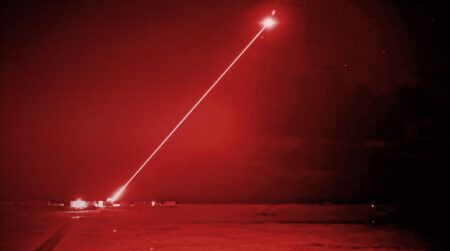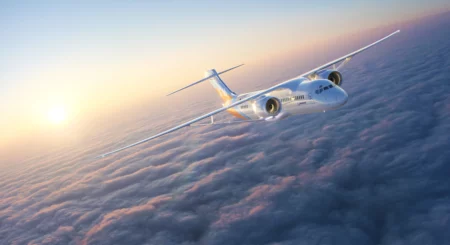On November 18, 2016, Embraer’s radical KC-390 jet airlifter received its IFI Provisional Type Certificate. The company was clearly delighted to prove the type’s early maturity in a program that continues to progress smoothly toward a planned 2018 full-service date. “The Instituto de Fomento e Coordenação Industrial (IFI) is the Brazilian Air Force branch responsible for military certification,” explains Paulo Gastão Silva, VP, KC-390 Program, Embraer. “Its Provisional Type Certificate for the KC-390 Basic Vehicle confirms that the aircraft in its basic configuration complies with the certification requirements.”
The manufacturer and regulator are working closely together on the program, enhancing the validation processes and improving processes and procedures. “This progress is making an important contribution toward ensuring initial operational capability is reached in the second half of 2017 and final operational capability in the second half of 2018,” the spokesperson says.
Although it benefits from Embraer’s recent experience with the E-Jet commercial airliner and fly-by-wire flight control systems for its Legacy 450/500 business jets, the KC-390 is a clean-sheet design and the airframer will remain engaged in its test program until the declaration of final operational capability.
Coming less than two years after test pilots Mozart Louzada and Marcos Salgado de Oliveira, and flight test engineers Raphael Lima and Roberto Becker, lifted the prototype KC-390 off for its one-hour 25-minute maiden flight on February 3, 2015, the IFI certification is even more remarkable considering the program’s 265-day grounding soon after that first sortie. Brazil’s parlous economic state saw the Força Aerea Brasilira (FAB) temporarily unable to fund KC-390 development. Embraer continued work on the ground, but the aircraft only returned to flight on October 26, 2016.
Soon after the return to full testing, KC-390 senior program manager Alexandre De Pol Fernandes reported high availability, noting, “We’re logging an unprecedented flight rate for a prototype.” The jet logged 50 hours in January 2016 alone. By then, the airlifter had been cleared out to Mach 0.8 and up to 36,000ft, figures the flight test crew at last year’s Farnborough International Airshow were delighted to share with Aerospace Testing International, emphasizing they were numbers C-130J pilots could only dream of.
A second prototype joined the test effort when it flew for the first time on April 28, 2016. Embraer is working the prototypes hard, since only the two are being built. Interchangeability between tasks in the event of unserviceability is therefore critical and, according to Silva, “Both are fully equipped with flight test instrumentation and presenting high availability, logging an unprecedented flight rate.” Static test and fatigue test airframes are also supporting the trials effort, and Embraer has built a forward fuselage section for bird strike testing.
Typical of a modern test campaign, much of the KC-390’s flying is for validation purposes, as Silva confirms: “Embraer makes extensive use of state-of-the-art tools, including simulation, modeling and laboratory testing to develop its products and the KC-390 flight test campaign is confirming results obtained by these tools.
“It is being certified through a dual approach with the Agência Nacional de Aviação Civil, Brazil’s National Civil Aviation Agency, and by Desenvolvimento Comando-Geral de Tecnologia Aeroespacial IFI, the military certification authority. Specific customer requirements going beyond the original certification and requiring a dedicated solution will be the subject of ad hoc discussions and addressed through case-by-case agreements.”
Refueling trials
Potential customer requirements include inflight refueling clearance against receivers others than those approved for the FAB and while Silva says, “Embraer does not comment on test details,” it seems likely the manufacturer would support such activity.
Working closely with the FAB has facilitated progress in inflight refueling trials and benefitted other specific mission requirements, with military assets available as required. By spring 2016, the aircraft’s rear ramp had been operated in flight, as had its side paratroop doors. The latter are removed inward, a retractable baffle extending forward of the door aperture to protect exiting paratroopers from the airstream.
Embraer has followed classic military airlifter design theory by installing a rear ramp, albeit choosing a unit somewhat longer than usual to reduce the loading angle for cargo, personnel and vehicles. It is also opened for gravity airdropping. Thanks to its advanced flap design, the KC-390 can adopt the slow-speed, nose-high configuration for such work, where palletized freight falls from the hold under the influence of gravity.
Airdropping and many other flight test aspects require photography and observation from chase aircraft and Silva says, “Embraer uses its own prototypes, with a Legacy 650, Legacy 500 and Phenom 300 currently available. A two-seat Hawker Hunter is used for specific high-speed testing.”
Test site
The trials campaign has centered on Embraer’s Gavião Peixoto, São Paulo site, although Silva notes, “Tests requiring specific conditions, including natural icing and crosswinds, will be performed outside Brazil.”
Artificial icing trials are planned for the McKinley Climatic Laboratory at Eglin AFB, Florida, later this year and a visit to Punta Arenas, southern Chile, will enable crosswind tests.
In choosing to debut the prototype at the Farnborough International Airshow in July 2016, Embraer took advantage of its rapid progress on the program and the availability of the second aircraft to showcase the new machine to at least 20 military delegations.
The jet arrived at Farnborough via Portugal, and departed on a ‘tour’ that included the Czech Republic, Egypt and the United Arab Emirates. But this was more than a demonstrator trip, since the transatlantic flying satisfied a number of test requirements and high-temperature trials were completed in the Middle East. Likewise, when a pair of FAB F-5 fighters joined the KC-390 for an independence day flypast on September 7, 2016, they assumed pre-contact receiver positions behind the transport so their pilots could report on turbulence – there was none.
On February 20 this year, Embraer announced that a sortie the previous day had seen an F-5 achieve dry contacts with the KC-390’s underwing Cobham 912E refueling pods for the first time. The transport’s extraordinary slow-speed performance has already been cleared and will enable it to refuel helicopters as well as fast jets. Dedicated helicopter inflight refueling trials are scheduled for 2018.
By the beginning of 2017, live paratroop drops from the side doors and ramp, and airdrops had been successfully trialled as Embraer worked to prove the KC-390’s tactical capabilities. The jet’s tactical prowess will increase further, with trials planned for 2018 covering operations from snow and ice runways, demonstrating an important capability to support Brazil’s Antarctic activities.
Working in the face of customer-generated problems, Embraer is making rapid progress on the multi-role KC-390 tanker/transport. It promises to deliver a modern twinjet that comes close to the C-130J in many areas of its performance and soundly beats the venerable turboprop in others. Embraer plans to bring the aircraft back to Europe for this year’s Paris Air Show, before embarking on a tour of other potential customer nations. No doubt it will settle a number of test points on the way.
Paul E Eden is a UK-based freelance writer and editor specializing in the aviation industry.
This article was also published in the March 2017 issue of Aerospace Testing International magazine.




